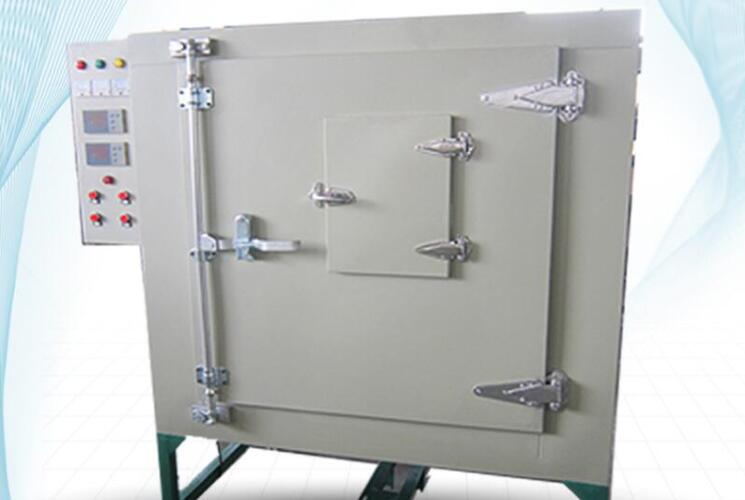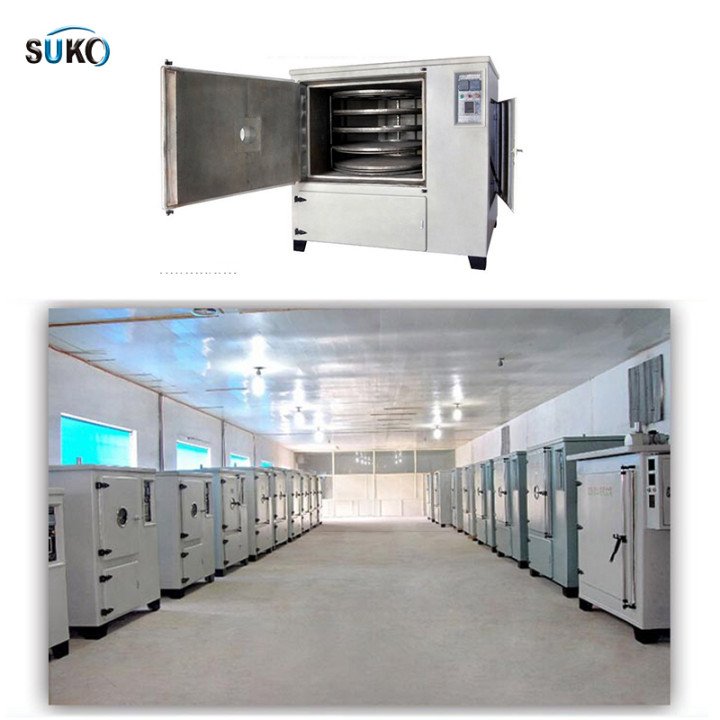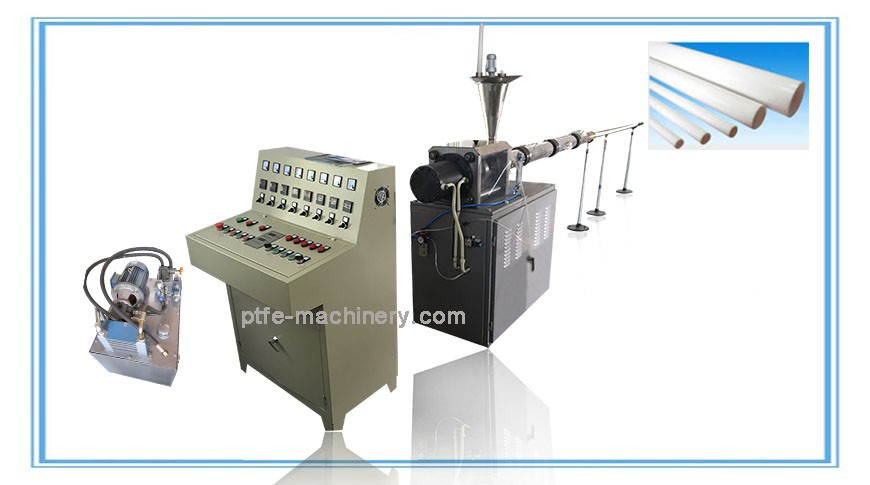From the perspective of the three factors that determine the properties of PTFE products — molecular weight, crystallinity and voidage, the voidage is mainly affected by the preforming pressure, and the molecular weight and crystallinity all change with the different sintering conditions. Therefore, sintering process conditions play a decisive role in the final properties of products such as density, hardness, permeability and mechanical properties.
Wang ping found that the sintering process of PTFE was affected by the rising and falling speed, sintering temperature and sintering time. The larger the product, the slower the speed of rising and cooling, the longer the sintering time. The sintering temperature of suspension resin is higher than that of dispersion resin. The sintering temperature of pure material products is higher than that of filled products. In general, the rate of warming is faster than the rate of cooling. In the same sintering furnace, pure material and filling products cannot be mixed; Products with different sintering conditions cannot be mixed. Products of different raw materials cannot be mixed. Taking the production of 3-layer molded circular plate with diameter of 1 m, thickness of 20 mm, double layer as pure ptfe and middle layer as filled ptfe as an example, the compression strength, bending strength, hardness and other mechanical properties of the circular laminated plate produced by this technology have been greatly improved.
Liu xianlan studied the forming process characteristics, forming method and mold design characteristics of PTFE, analyzed the defects and causes of PTFE products produced by cold pressing and sintering, and put forward the treatment methods. PTFE can be molded by a variety of preforming processes, such as molding, extrusion, hydraulic molding, push molding and secondary processing, and then sintered to the final product.PTFE molding is mostly made of suspended resin. When the thickness of sheet is less than 1.5mm, disperse resin is used. Its technological process: resin – sieve (suspension resin after pounding, loose, and the 20 mesh mesh sieve) – press (PTFE powder loading the mould under pressure from 20 to 35 MPa, after press compaction forming) – sintering (in 370 ~ 380 “C temperature sintering in sintering furnace) – moulded products (under free state within the mold or after cooling to finalize the design as required by the board, rods, tubes, gaskets and packing products, etc.).Hydraulic method is also called the equilibrium method or rubber molding in its operating process is: put rubber bag in die – connected to the water pump, filling the water swell the rubber bag into a cylindrical – resin evenly join between bag and external mold mold closing – continue to gradually increase the water pressure, water filling up to 12 ~ 13 mpa pressure maintaining 30 min: after water – decompression, ripping, sintering, cooling is the use of bright and clean appearance. Push is also called the paste extrusion molding, 20 ~ 30 mesh sieve dispersion resin and organic liquid (such as toluene, petroleum ether, the solvent oil) mixture 1:5 paste mixture, preloading into thick wall cylinder billet, push into the compressor cylinder, heating, with a plunger push molding, after drying in the 360 ~ 380 ° C temperature sintering, after cooling products have strong push tube, rod, etc.Extrusion molding can be divided into two types: screw extrusion and plunger extrusion. The pre-sintered resin after crushing and sifted is added to the material cylinder. Through screw rotation or reciprocating push of plunger, the raw material is transported to the extruder at the same time of compaction.
Wang ping studied the forming process of PTFE foam material. Suspended polytetrafluoroethylene is used as raw material, and condensed cyclic aromatic hydrocarbons are selected as pore-forming agent. After mixing, preforming products are preformed and sintered. At the initial stage of sintering, drying process is adopted to make pore-forming agent escape, and then resintering stage is entered. Foam materials with different dielectric constants can be prepared in different proportions to meet various requirements.
Chen xu et al. conducted compression test and sintering test on PTFE, discussed the relationship between density, compression strength and compression modulus, and analyzed the compression strength of specimens under different sintering processes, and obtained more appropriate molding pressure and sintering process. The results showed that the compression strength of PTFE decreased with the increase of pressing pressure, and the compression modulus increased with the increase of pressing pressure. The molding pressure was 27.5mpa, sintering temperature was 380 C, and the insulation time was 4h.
In order to overcome the disadvantages of pure ptfe, such as poor abrasion resistance and large thermal expansion coefficient, Raytheon studied the bronze-filled particles in ptfe, and expanded the application scope of ptfe. The conventional warm pressing molding of ptfe is characterized by long cycle, poor performance, low dimensional accuracy and smoothness, while the warm pressing molding in this study has fewer working procedures, short cycle and significantly improved mechanical properties.






wonderful points altogether, you simply gained a brand new reader. What would you recommend about your post that you made a few days ago? Any positive?